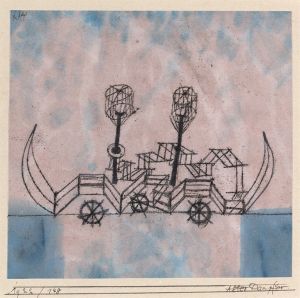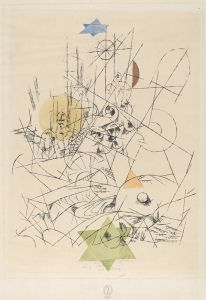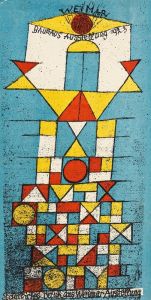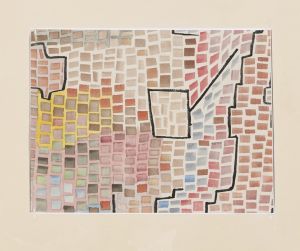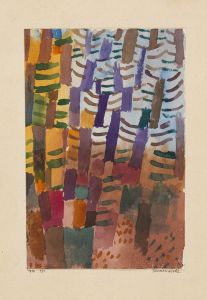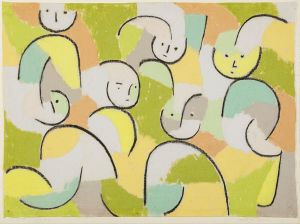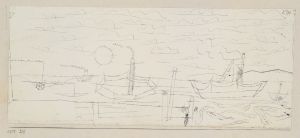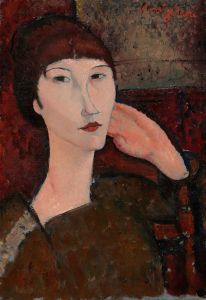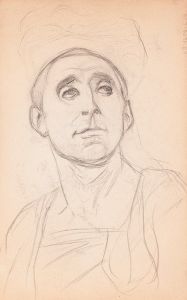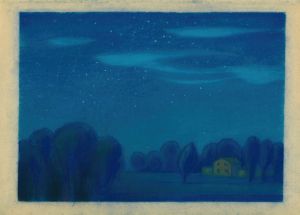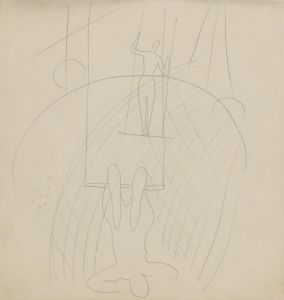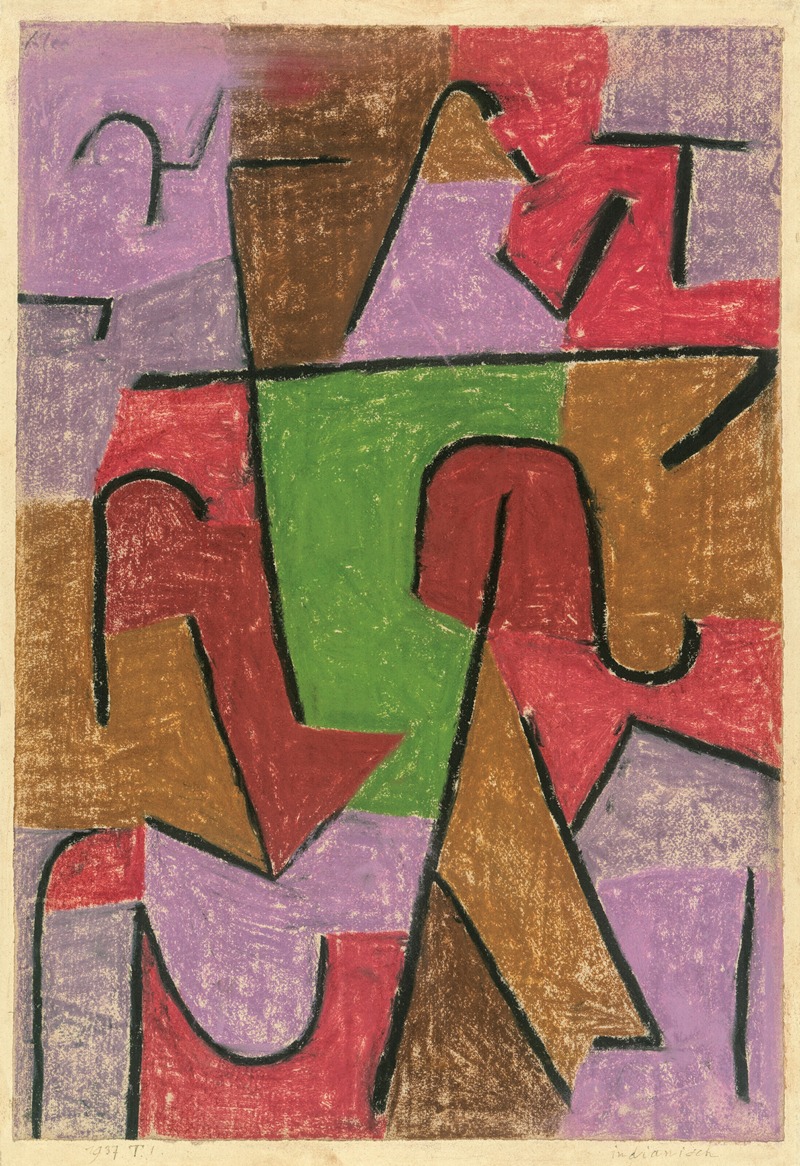
Indianisch
A hand-painted replica of Paul Klee’s masterpiece Indianisch, meticulously crafted by professional artists to capture the true essence of the original. Each piece is created with museum-quality canvas and rare mineral pigments, carefully painted by experienced artists with delicate brushstrokes and rich, layered colors to perfectly recreate the texture of the original artwork. Unlike machine-printed reproductions, this hand-painted version brings the painting to life, infused with the artist’s emotions and skill in every stroke. Whether for personal collection or home decoration, it instantly elevates the artistic atmosphere of any space.
Paul Klee's Indianisch is a painting created in 1914 by the Swiss-born German artist, who is widely regarded as one of the most influential figures in modern art. The title Indianisch, which translates to "Indian" in English, reflects Klee's interest in non-Western cultures and his exploration of abstract and symbolic forms. This work is part of Klee's broader artistic practice during the early 20th century, a period when he was experimenting with color, form, and the integration of various cultural influences into his art.
The painting was created during a pivotal time in Klee's career. In 1914, Klee undertook a transformative journey to Tunisia, where he was profoundly inspired by the vibrant light and colors of the North African landscape. While Indianisch itself is not directly linked to his Tunisian travels, the period marked a significant shift in his approach to color and abstraction. Klee began to move away from representational art, focusing instead on creating compositions that conveyed emotion and meaning through simplified forms and a symbolic visual language.
Indianisch exemplifies Klee's interest in combining geometric shapes, lines, and patterns to create a sense of rhythm and harmony. The painting incorporates abstract motifs that suggest a connection to indigenous or tribal art, though Klee's interpretation is highly stylized and does not directly replicate any specific cultural tradition. His work during this time often drew on a wide range of influences, including prehistoric art, children's drawings, and non-Western artistic traditions, which he admired for their perceived authenticity and spiritual depth.
Klee's artistic philosophy was deeply rooted in the idea of art as a means of expressing inner realities rather than merely depicting the external world. This approach is evident in Indianisch, where the interplay of shapes and colors invites viewers to engage with the work on an intuitive and emotional level. The painting reflects Klee's belief in the universality of artistic expression and his desire to transcend cultural and temporal boundaries through his art.
Today, Indianisch is recognized as an important example of Klee's early abstract works. It demonstrates his innovative use of form and his ability to synthesize diverse influences into a cohesive and unique artistic vision. The painting is housed in the collection of the Zentrum Paul Klee in Bern, Switzerland, a museum dedicated to preserving and showcasing the artist's extensive body of work.





